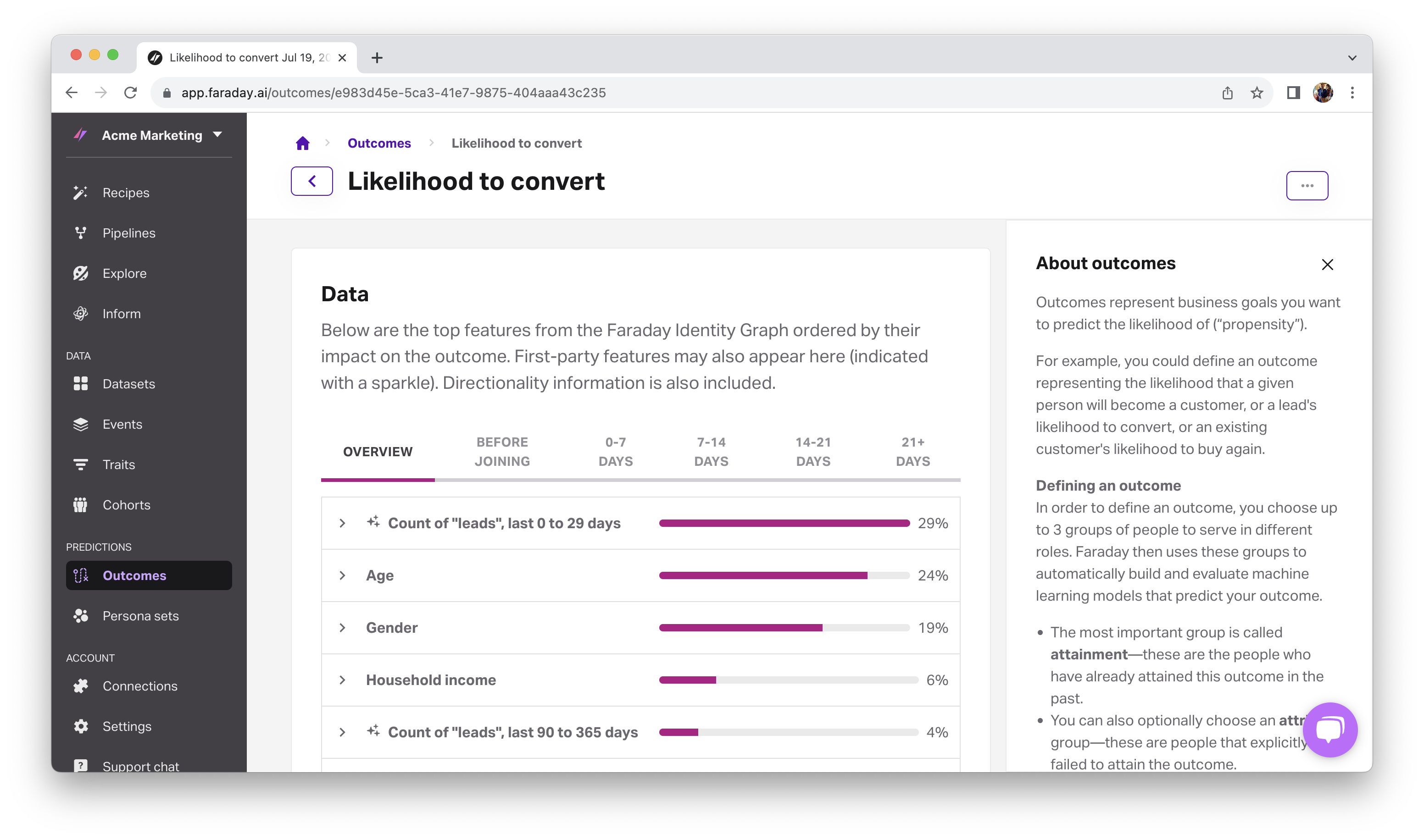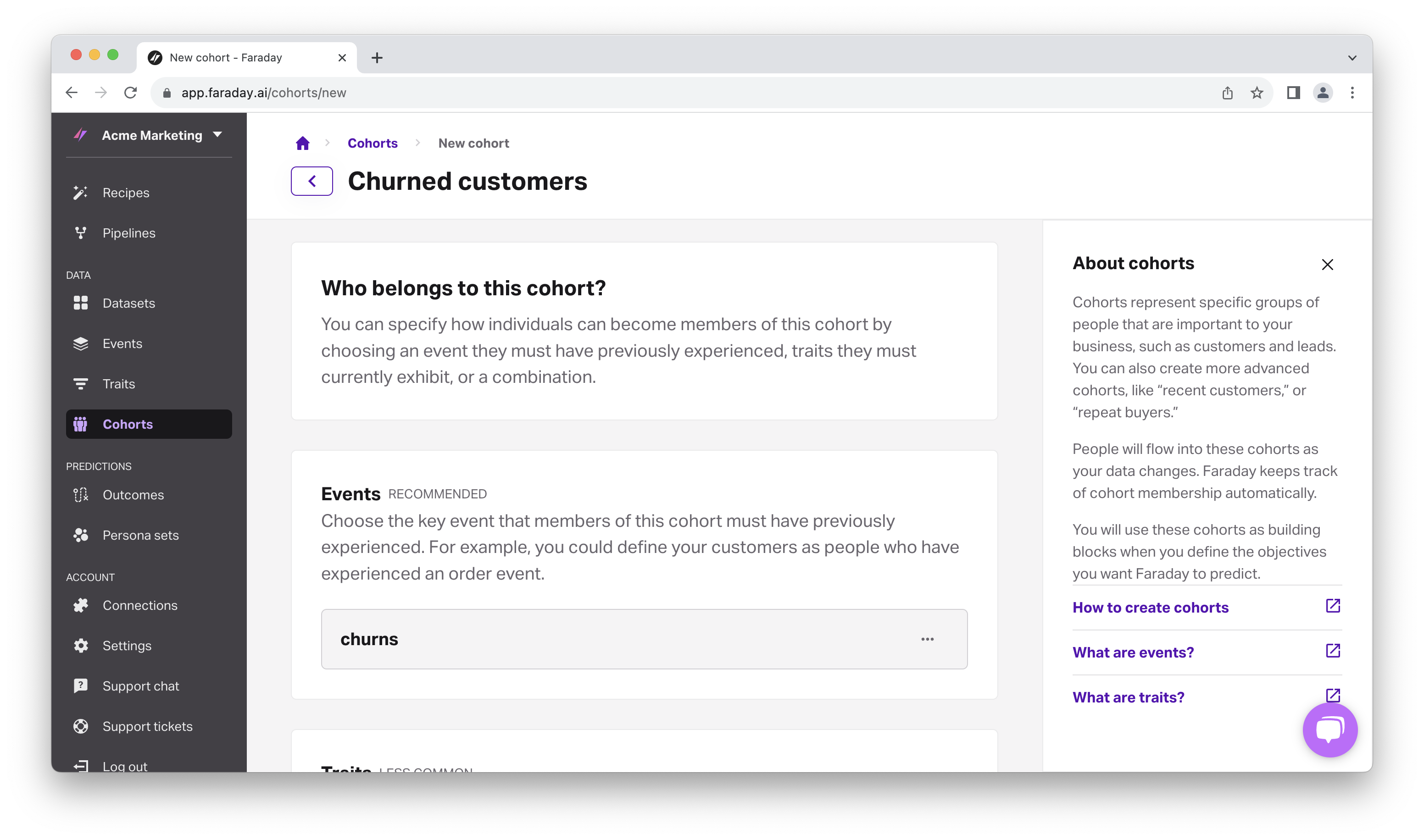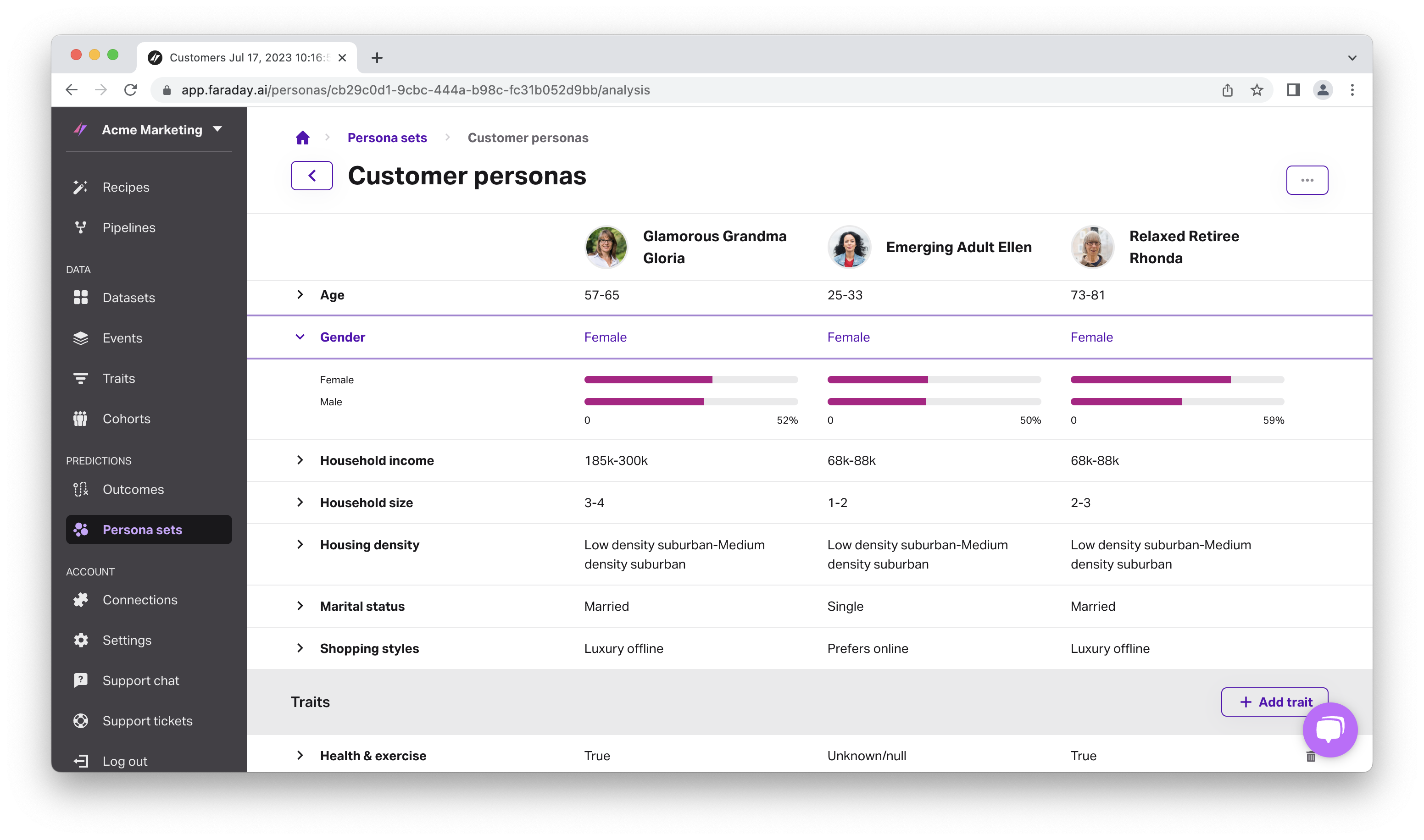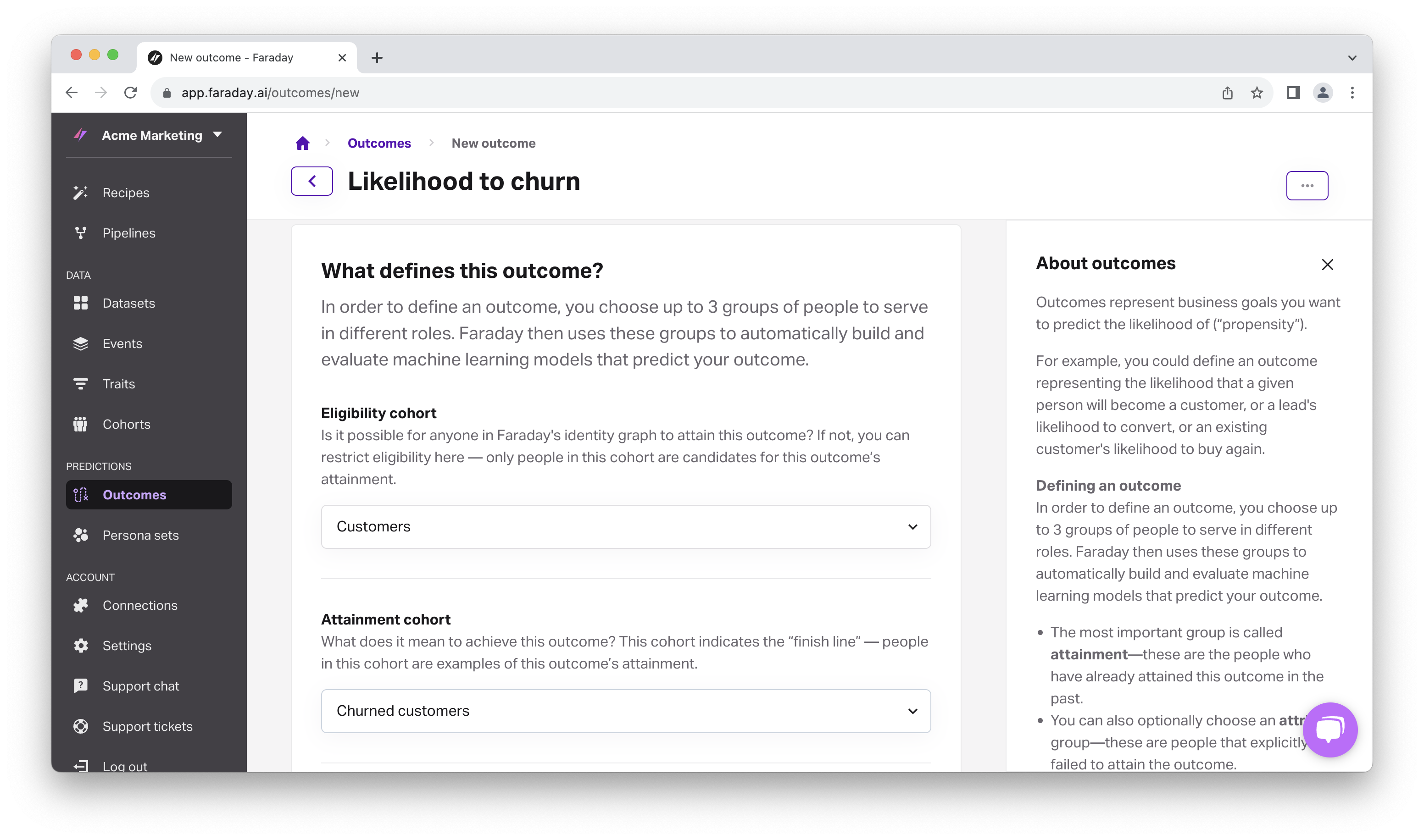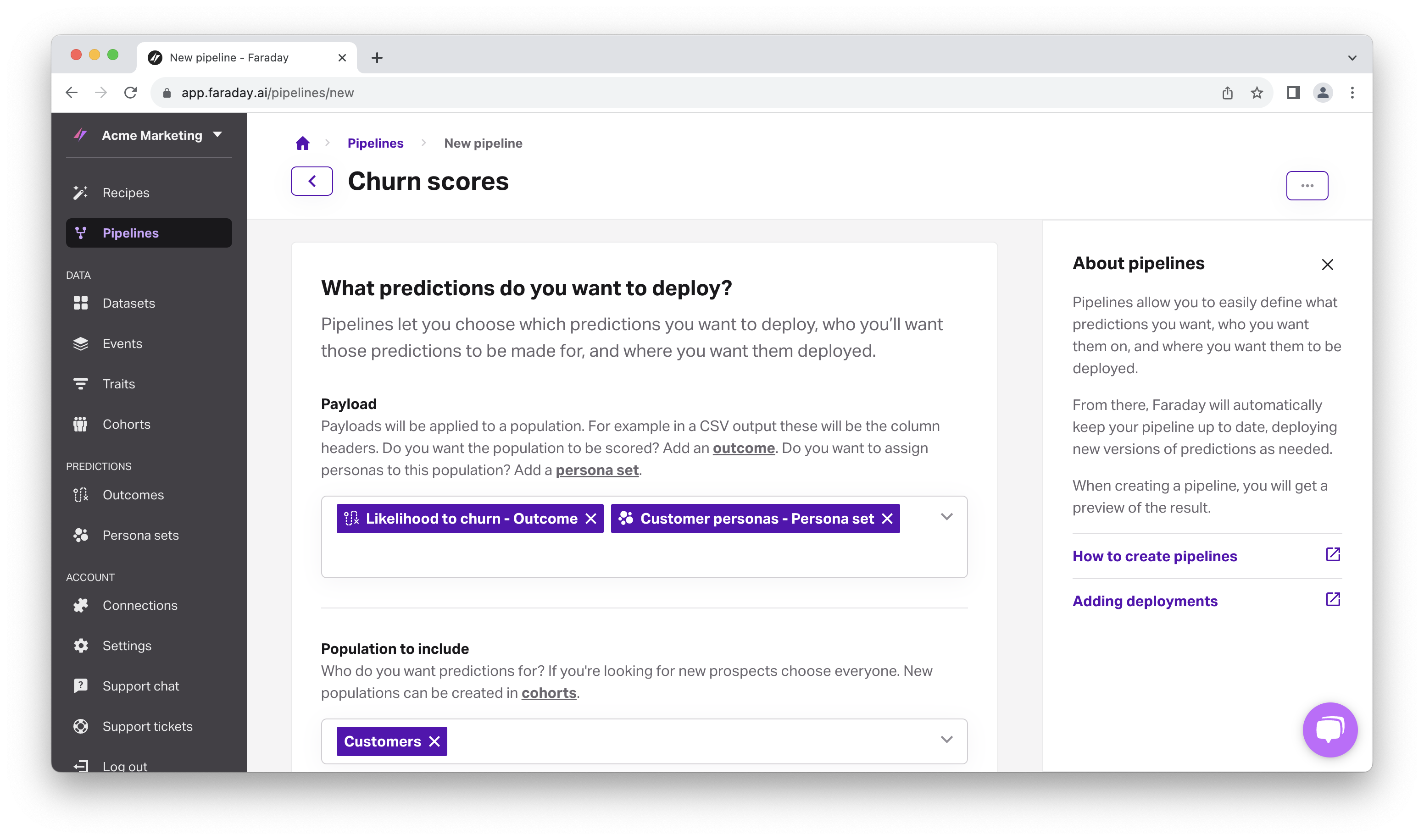Churn prevention: How to reduce customer churn using machine learning
Learn the benefits of focusing on churn prevention, churn prevention strategies, and the importance of predicting churn.


What is customer churn?
Churn refers to the point at which a customer decides to cease using a product or service that your company offers. Churn can occur for a variety of reasons, but the bottom line is that a churned customer brings no revenue to your business. When it comes to churn, no business can ever completely eliminate it, but there are strategies to consider that can help your business with churn prevention and mitigation.
Why is churn prevention so important?
Studies have consistently shown that it costs more to acquire new customers than it does it to retain existing ones. On top of that, it’s often easier and more profitable to retain existing customers; you have a 60-70% chance of selling to a current customer vs a 5-20% chance of making a new sale, and current customers spend 67% more on average than new customers. Despite this, 44% of businesses focus on customer acquisition, while only 18% focus on customer retention. While you shouldn’t drop acquisition to solely focus on retention, a smart, effective strategy should include a healthy mix of acquisition and retention.
What causes customer churn?
When a customer churns, it’s key to analyze your data to understand why they churned so that you can take steps to ensure customers like them don’t churn in the future, or–if they’re not ideal customers, and therefore likely to churn anyway, avoid them entirely. Maybe one of your customers received poor customer service when they chatted in for support, or they received an email that looked like generic spam and included offers that weren’t relevant or resonant. Or, perhaps you’re acquiring too many discount shoppers - people who are only biting because you offered them steep discounts.
Churn prevention strategies
Churn prevention strategies begin with having a strong foundation of customer data, and are solidified by being smart about how you use that data.
Mitigate churn higher in the funnel
The other key benefit of defining and identifying your best-fit, high-LTV customers is that it can help you find more of them. Discount purchasers that only buy when you send them a 75% off coupon aren’t ideal customers, and are likely to churn once their promo window is up. With a solid understanding of who your ideal customer is, you can find more of them to target so that you’re less likely to need to worry about them churning in the future.
Use data to identify causes of churn
Segmenting your customers into unique subgroups can have an impact on your overall strategy that’s twofold: first, you’ll find different attributes and traits that enable personalization across each individual subgroup, leading to frictionless engagement that includes personalized offers, copy, & creative, ensuring your customers feel understood.
Second, by analyzing the data that you have on your customers, you can discover patterns and similarities in those that churn, which can help you identify why they opted to make that critical decision. The same applies to the other side of the coin–you can segment out your ideal customers so that you can define what makes them ideal; maybe they’re big spenders, or simply consistent ones.
Create personal and frictionless experiences
All it takes is one bad experience to turn a loyal customer into a churn. Ensuring that each experience your customers have with your brand is personal and frictionless goes a long way to keeping your customers on board. Your engagement, regardless of channel, should include content that’s relevant to who they are and what kind of shopper they are. This results in experiences that seamlessly deliver the exact information, products, and services that your customers are looking for, so that they never have the excuse they need to find an offer elsewhere.
Invest in customer loyalty programs
58% of customers that are members of a brand’s loyalty program make a purchase at least once per month. Loyalty programs are an incredible way to keep your customers engaged with your brand on a regular basis. They’re also a two-way street: not only do they reward your customers for their loyalty through discounts, bundles, and other similar offers, but they reward your brand with customers that stay subscribed and keep coming back for more.
Provide excellent customer service
Nobody likes having to contact customer service, but when they absolutely have to, ensuring their experience is a delight is critical in order to keep their business. With excellent customer service, a customer can go from frustrated at something not working as expected–churn in the back of their mind–to relieved, satisfied, and still on board.
How machine learning enhances churn prevention efforts
Manual churn prevention strategies are doable, but they’re time-consuming, resource-intensive, and data-hungry. Fortunately, churn management software utilizing machine learning can take the workload off of your teams’ shoulders, while providing you with actionable insights for a variety of use cases.
Segmentation & insights
Traditional segmentation provides a limited level of insight into who your customers are due to the fact that your data is likely limited to just their interactions with your brand. In adopting machine learning through churn management software, your data is unified with rich, third-party consumer data to reveal distinct subgroups within your customers, leads, and any other interesting group of people–these are your personas. These insights include demographics, psychographics, property, financials, hobbies, & more. Your customer–Jane Doe–who recently purchased a dog toy, becomes Jane Doe, dog owner, married, household income of over $200k, has children in the household, and prefers to shop in-store rather than online. This level of insights serves you personalization guidance on a silver platter.
Machine learning also significantly simplifies the process of analyzing your segmented data. Instead of manually poring over every datapoint in an attempt to reveal similarities between churners–as well as those between ideal customers–machine learning accomplishes this for you in a fraction of the time, leaving you with a predictive model that’s easily interpretable and actionable through predictive model reports.
The above image displays a Faraday outcome report, detailing the features most important to the predictive model.
Personalization
With rich, persona-level insights on every individual that your brand is interested in, all of your outreach and engagement can be personalized to a tee. This means that each engagement–from email to direct mail, and everything in between–provides resonant copy & creative that leaves your customers feeling understood and heard. Customer Jane Doe, a member of the Millennial May persona, can receive a direct mail postcard that includes creative that incorporates some of the traits mentioned above–dogs and children, for example–and copy that resonates with Millennials, capped off with directions to your nearest brick-and-mortar store to match their in-person shopping style.
Churn prediction using machine learning
What if you could know whether or not a customer was going to churn, before they even knew they were considering the choice? Churn prediction using machine learning provides you with churn scores on an individual level, based on how likely the individual is to churn. This kind of insight gives you the ability to proactively reach out to customers that are likely to churn with deeply personalized outreach so that you can keep them on board. On top of that, churn predictions help you prioritize who to reach out to so that you’re not wasting time on bad fits.
LTV prediction
To add another layer of depth and effectiveness to your churn prevention strategy, LTV prediction enables you to define cutoffs for how deep a discount someone needs to receive for retention to be profitable. If a customer has a churn score of 75–pretty likely to churn–but they have a predicted LTV that’s in line with your goals, it’s worth the effort to retain them.
How to predict and prevent churn using Faraday
Churn management software can help you create an effective, impactful strategy for finding & retaining your best customers. Let’s take a look at how easy it is to predict churn and deploy churn predictions to your stack with Faraday.
Connect data and define customers
To kick things off, plug your customer data in by mapping your data fields to matching Faraday properties. Then, in cohorts, you’ll utilize both your customer data and Faraday’s built-in consumer data to build a cohort for your current customers, and your churned customers.
Build personas to reveal rich insights and improve your personalization efforts
Predict personas with the help of Faraday’s rich, cookieless, opt-in consumer data. Utilize trait breakdowns like age, hobbies, shopping styles, and more to understand the nuances of how different portions of your customer base stand apart from each other–every little piece of personalization in your engagement matters.
Build predictive churn outcomes to detect churn risks
Next, you’ll build your predictive outcome by defining your attainment cohort as your churned customers, and your eligibility cohort as your current customers. With these selections, you’re predicting how likely it is that any member of your customers cohort is going to enter your churned customers cohort by churning.
Now that your predictive outcome is created, make your predictions actionable by creating a pipeline with your likelihood to churn outcome in the payload–alongside personas for easy personalization–and your customers as the population to include.
Faraday’s machine learning algorithms then predict how likely each of your current customers is to churn, while also revealing which people belong to what persona on an individual basis so that you know how to engage with them.
Deploy churn predictions to your stack
With your pipeline created, deploy your churn scores–AI-generated personas attached–anywhere in your stack that you need them. Activate on your predictions by targeting your customers that are most likely to churn, and use their personas as guidance for how to engage with them in a way that’s highly resonant.
Scale churn prevention by finding more of your best customers
The best churn prevention strategy is to acquire best-fit customers and ensure that they have a frictionless experience with your brand at every stage in the journey. Find more of your ideal customers by following the above guide for building an outcome, but use your customers as the attainment cohort. Implementing both a retention strategy through churn scores and an acquisition strategy that focuses on only your best-fit customers can give you a serious leg up on your competitors.
Ready to try it out? Create a free account.

Faraday
Faraday is a predictive data layer that helps brands and platforms understand who their customers are and what they’re likely to do next. We connect first-party data with privacy-safe U.S. consumer context from the Faraday Identity Graph and deliver production-ready predictions and datapoints you can activate across marketing, sales, and customer journeys.

Ready for easy AI?
Skip the ML struggle and focus on your downstream application. We have built-in demographic data so you can get started with just your PII.
